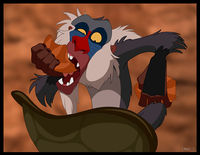Difference between revisions of "Spring 2012: Ajoke Jumoke Williams"
| Line 8: | Line 8: | ||
<br/> | <br/> | ||
---------------------------------------------------------------------------------------------------------------- | ---------------------------------------------------------------------------------------------------------------- | ||
| − | <h2> Lab 1: Optical Trapping: UI and Instrument Control< | + | <h2> Lab 1: Optical Trapping: UI and Instrument Control</h3> |
| − | <h4> Diagram of Electronic Control System < | + | <h4> Diagram of Electronic Control System </h3> |
A.<br/> | A.<br/> | ||
B.<br/> | B.<br/> | ||
| Line 16: | Line 16: | ||
D.<br/> | D.<br/> | ||
| − | <h4> Goals: What we set out to accomplish < | + | <h4> Goals: What we set out to accomplish </h4> |
We set out to add functionality to the trap control software, specifically we wanted to automate centering of the DNA-tethered bead using a centering algorithm which we would write in MATLAB. To center the DNA-tethered bead we would need to learn how to talk to different electronics using DAQ and the daqtoolbox in MATLAB, how to test a code which is supposed to provide specific functionality, and a bit about the gui in MATLAB. | We set out to add functionality to the trap control software, specifically we wanted to automate centering of the DNA-tethered bead using a centering algorithm which we would write in MATLAB. To center the DNA-tethered bead we would need to learn how to talk to different electronics using DAQ and the daqtoolbox in MATLAB, how to test a code which is supposed to provide specific functionality, and a bit about the gui in MATLAB. | ||
| − | After writing the code, our goals expanded to include writing code to simulate a typical optical trap experiment which would be used to measure the persistence length and the contour length of DNA. | + | After writing the code, our goals expanded to include writing code to simulate a typical optical trap experiment which would be used to measure the persistence length and the contour length of DNA. <br/> |
<p style="font-family: helvetica; font-size:9pt"> | <p style="font-family: helvetica; font-size:9pt"> | ||
| Line 31: | Line 31: | ||
1. Understanding the OTKB code and figuring out how to use the variables that were already defined in OTKB.m to write our code, for ease of integration.<br/> | 1. Understanding the OTKB code and figuring out how to use the variables that were already defined in OTKB.m to write our code, for ease of integration.<br/> | ||
2. Writing a skeleton for the data acquisition and then the subsequent update of piezoelectric stage position. <br\> | 2. Writing a skeleton for the data acquisition and then the subsequent update of piezoelectric stage position. <br\> | ||
| − | 3. Determining the relationship between the output piezoelectric voltage and the feedback voltage fed into the piezoelectric motor so that the stage can be centered accordingly | + | 3. Determining the relationship between the output piezoelectric voltage and the feedback voltage fed into the piezoelectric motor so that the stage can be centered accordingly.<br/> |
| − | 4. Designing a centering algorithm | + | 4. Designing a centering algorithm <br/> |
| − | 5. Proof of concept - Simulating data and testing results | + | 5. Proof of concept - Simulating data and testing results.<br/> |
| − | 6. Testing with real DNA-tethers. | + | 6. Testing with real DNA-tethers.<br/> |
Revision as of 07:53, 28 February 2012
Hey, I'm Ajoke(not pronounced -a-joke) Williams and I'm a senior in Biology. I took 20.309 my sophomore year and it was a frightening experience;mostly because the class was really hard for me. Nevertheless the material was awesome. Because of 20.309 I received my first exposure to optics and matlab. Although 20.309 only touched on geometric optics I found thinking about light and its propagation through space and matter exciting. Fast forward to my senior fall year and I found myself taking a Modern Optics class and working in a UROP where I mostly code in matlab, which is pretty ironic since geometric optics was not my friend my sophomore year and I have never before considered myself a "programmer". My expectations for this class are to learn more about optics and how optical components are interfaced with electrical and digital components to make robust biological measurement/imaging systems, to improve my programming skills and learn how to build a PCB board. Right now I think I'm leaning towards working on the STORM imaging method for a final project.
Lab 1: Optical Trapping: UI and Instrument Control</h3>
Diagram of Electronic Control System </h3>
A.
B.
C.
D.
<h4> Goals: What we set out to accomplish
B.
C.
D.
<h4> Goals: What we set out to accomplish
We set out to add functionality to the trap control software, specifically we wanted to automate centering of the DNA-tethered bead using a centering algorithm which we would write in MATLAB. To center the DNA-tethered bead we would need to learn how to talk to different electronics using DAQ and the daqtoolbox in MATLAB, how to test a code which is supposed to provide specific functionality, and a bit about the gui in MATLAB.
After writing the code, our goals expanded to include writing code to simulate a typical optical trap experiment which would be used to measure the persistence length and the contour length of DNA.
